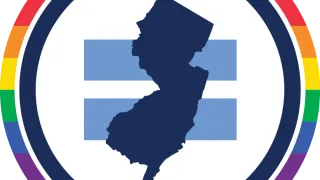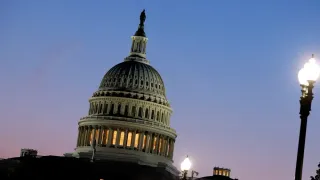March 16, 2016
Ireland: Newgrange, Dublin and the Changing Face of LGBT Rights
Bobby McGuire READ TIME: 9 MIN.
It's 11 a.m. and I'm in County Meath, Ireland, having a serious WTF moment. Not 12 hours earlier I was out having my fourth Guinness of the evening at a bar operated by a noted drag queen turned political activist -- now I'm underground in what feels like the opening scene of an Indiana Jones movie.
More specifically, I'm in the inner chamber of Newgrange, a monument built by prehistoric inhabitants of the Boyne Valley around 3000 BC, which predates both Stonehenge and the Pyramids of Giza. A marvel of engineering and astronomy, Newgrange's structure is made of hundreds of meticulously arranged stones weighing several tons each, positioned in such a way that the entrance to the subterranean chamber is in perfect alignment with the rising sun on the winter solstice. Each December 21, for just a few brief minutes, the dark passageway and interior antechamber are briefly bathed with light before reentering another 364-day hibernation.
The questions that keeps running through my mind: Who built this and why, and how did they talk their Neolithic buddies into the backbreaking labor it took to put it together? Strangely, there are no answers. The general consensus among scholars is that ancient inhabitants built Newgrange for ritualistic reasons, but its intended purpose remains a mystery to archaeologists and anthropologists. Acknowledging this enigma, the historian who gives tours of the site encourages visitors to draw their own conclusions as to the site's origin.
It's been said that the Irish never let facts get in the way of a good story. And good stories are exactly what you'll find on this island, whose natural beauty inspired many an unforgettable movie and whose rich literary tradition gave birth to some of the greatest writers in the English language.
ON THE STREETS OF DUBLIN
Roughly 50 miles south of Newgrange is Ireland's capital city of Dublin, where you can barely walk a block without coming across a home, park or business that has some sort of association with one of the country's revered wordsmiths.
There's Sweny's Chemists, described in exquisite detail by James Joyce in his novel "Ulysses," where the character Leo Bloom bought his lemon soap. No longer a fully operational apothecary, the tiny storefront business with its dark wood display cases appears unchanged since 1918, when the novel was first serialized. The shop now sells secondhand books and holds daily readings from Joyce. Bloom's famed lemon-scented soap remains the store's top-selling item.
Not far from Sweny's is Trinity College, alma mater to some of the most esteemed writers of the English language. Jonathan Swift, Oscar Wilde, Samuel Beckett and Oliver Goldsmith are among the many immortal writers who are Trinity alumni. The school is also home to the Library of Trinity College, where more than 4.5 million printed volumes and manuscripts are housed. The library is also one of the city's biggest tourist attractions thanks to The Book of Kells, an illuminated book of the four Gospels of the New Testament. Believed to have been written around 800 AD, the illustrations in the book are regarded as the most ornate and complex use of Christian iconography ever. You'll only see a single page per visit (a librarian turns a page of the book each day), but the level of detail and brilliance of color will astound you. The book, which is the highlight of the Old Library tour, is considered Ireland's national treasure.
In addition to the Dublin Writers Museum in Parnell Square -- which honors Irish writers like Wilde, Beckett, Joyce, Yeats and others -- you'll find the spirit of the country's authors and tales in any number of the city's pubs, many of which served as meeting places for the literary avant-garde.
A photo op with perhaps the country's most celebrated gay writer, Oscar Wilde, can be had in a corner of Merrion Square Park, across from 1 Merrion Square, where the author and playwright was born. Built into a boulder lies a reclining, larger-than-life sculpture of Wilde. Those traveling this spring can also enjoy the International Gay Dublin Theatre Festival (May 2-15, 2016), founded in 2004 to mark the 150th anniversary of Wilde's birth. Feeling a bit underdressed in my jeans, compared with the great Irish author who can be found immortally clad in a flamboyant green smoking jacket with pink lapels, one of his best quotes comes to mind: "We are all in the gutter, but some of us are looking at the stars."
THE MERRION
Located a few blocks from the Wilde statue and across from the Irish Parliament is the Merrion Hotel Dublin, comprising four restored townhouses from the Georgian era. Part of the Leading Hotels of the World family of luxury hotels, the Merrion, with its antique-furnished connecting parlors, impeccably restored plasterwork, generous-sized rooms and renowned art collection, is a favorite with celebrities and high-stakes players.
For hungry travelers too weary to venture out to find one the city's many award-winning eateries, the Merrion offers a variety of venues under their roof that offer an array of meal options. From Art Tea service offered every afternoon, where the hotel's art collection inspires delectable edibles, to the Cellar Restaurant, where seasonal, indigenous ingredients are featured on the menu, and the less formal Cellar Bar that boasts an impressive wine list meant to be paired with local charcuterie -- the Merrion offers a one-stop culinary shop.
On the Merrion's north end is Building 24, a site related to one of Ireland's more famous quotes. It was here (according to conflicting reports) that Arthur Wellesley, first duke of Wellington who defeated Napoleon at Waterloo, was born. Refuted by most historians now, story has it that Wellington, destined to be Britain's prime minister, was ashamed of his Irish birthplace, and reportedly said, "Being born in a stable doesn't make one a horse." In a pre-RuPaul act of throwing shade, Irish political leader Daniel O'Connell answered Wellington by saying, "Perhaps not, but it does make one an ass." During my short stay at the Merrion, I heard at least three different versions of the Wellington story, all with the same ending, proving that a good Irish anecdote is more about the punch line than the setup.
FOAMY HEAD AND OTHER LOWBROW FUN
One tourist attraction in Dublin not to be missed is a tour of the Guinness Storehouse. Equal parts gift shop and food-and-drink establishments, the hands-on museum is ensconced within the framework of an informative tour. Think Willy Wonka's factory for beer. A trip to Guinness Academy offers visitors the opportunity to learn how to pour that perfect pint of stout, after which they can drink the fruit of their labor. Before leaving the Guinness Storehouse, be sure to take a trip to the Gravity Bar atop the building. Billed as the highest point in the city, the Gravity Bar boasts gorgeous panoramic city views.
Although the bars close early by this New Yorker's standards, you can occasionally find a watering hole that's allowed to operate after midnight. To soak up (and hopefully meet up) with attractive, friendly LGBT locals, you'll find lean opportunities to locate bars and clubs that cater to gay clientele.
One such place, however, is the George, Dublin's oldest gay bar. With its large stage framed by an ornately carved bar dating back to the 19th century, the George maintains a classic Dublin feel with a gay twist. The crowd is a true mixed bag of muscle boys, twinks, butch and femme girls, as well as middle-aged people who are usually put off by those kind of places. Late-night drag shows bridge the gap and will make the international traveler feel right at home.
Another gay haunt not to be missed is PantiBar, owned by drag artist and activist Rory O'Neill (aka Panti Bliss). Be sure to catch Panti's show and enjoy the friendly crowd and hot bartending staff.
THE CHANGING FACE OF LGBT RIGHTS IN IRELAND
Once such embellishment of the Wellington story was told to our group by Irish senator and James Joyce scholar David Norris. A spritely iconoclast, Norris is the first openly gay person ever elected to public office in Ireland. Considered the Harvey Milk of the Emerald Isle, Norris has been the leading voice for LGBT rights in the country for several decades and gained international fame when he took Ireland to the European Court of Human Rights and successfully challenged anti-gay Irish laws created in the 19th century under British rule.
Norris was also one of the key figures in promoting the passage of marriage equality in Ireland. In 2015, after a landslide victory, Ireland became the first country in the world to legalize same-sex marriage by public referendum.
Politics aside, Ireland has made great strides in LGBT equality in both popular culture and through social institutions. In 2014, Maria Walsh, who announced a few days before judging that she is a lesbian, won the Rose of Tralee competition, Ireland's equivalent to Miss America. Although many traditionalists ardently state that she should not have been allowed to win, her designation as the first lesbian winner of the contest (a national institution) catapulted her to becoming a powerful and influential role model. She used her reign to promote women's rights and combat anti-LGBT bullying.
For more information on traveling to Ireland visit:
Discover Ireland
Brendan Vacations






